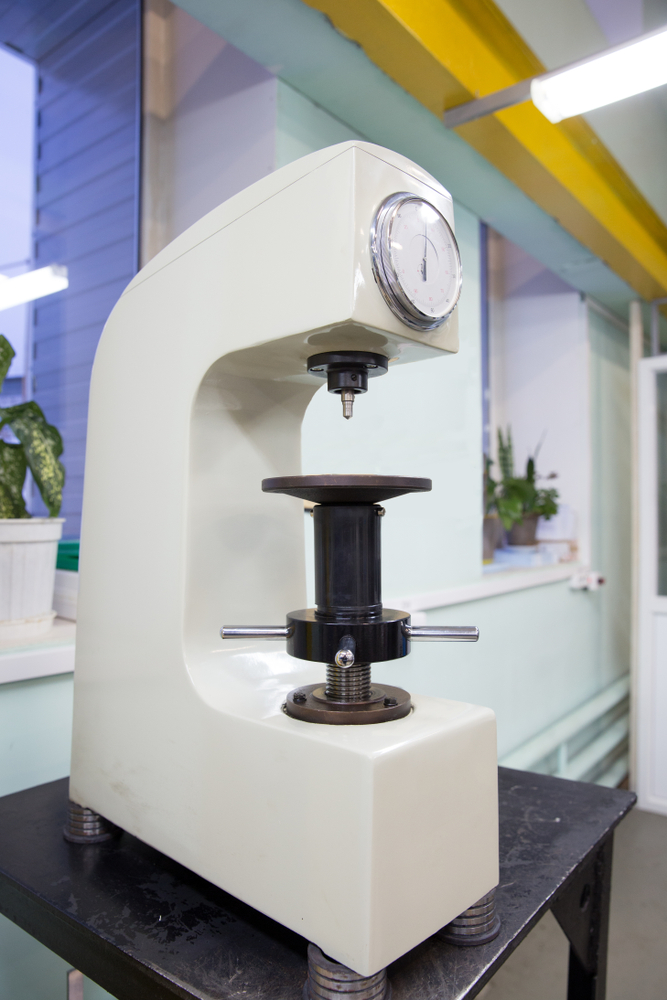Brinell hardness tester
The brinell hardness tester determines the hardness of a material. This machine pushes the chromium steel against the flat material surface to determine its hardness. The spherical indenter is composed of tungsten carbide; on the other hand, hardness is measured in HBW.
Advantages of this machine
• It is unaffected by the flat uneven metal surface.
• It can withstand a significant load during testing.
• Under a microscope, the indentation formed on the material can be viewed and measured.
• Can determine the hardness of powder metallurgy and cast components.

Disadvantages of this machine
• Due to the big indentor impression, it’s not ideal for little material or objects.
• It is time-consuming as it is prolonged.
Types of these machines
The analog brinell hardness testers
These machines have a hydraulic power pack and control circuit, which aids in the loading and unloading, thus making it easy as possible. The ball penetration is measured using a dial gauge. These machines can measure the hardness of castings, forgings, and alloys of all kinds.
Optical brinell hardness testers
These machines resemble the analog ones when it comes to design and operations. In addition, 14x magnification optical equipment is included to project the diameter of the ball impression on a glass screen using a micrometer measurement method.
Instantly after unloading, it projects the diameter impression, reducing the time frame for ball impression measurement. The testers can assess the hardness of casting, forgings, and a variety of other metals.
Semi-automatic brinell hardness testers
Unlike other tests, semi-automatic brinell hardness testers are versatile and can use numerous output techniques. The indentation is measured using either a regular microscope.